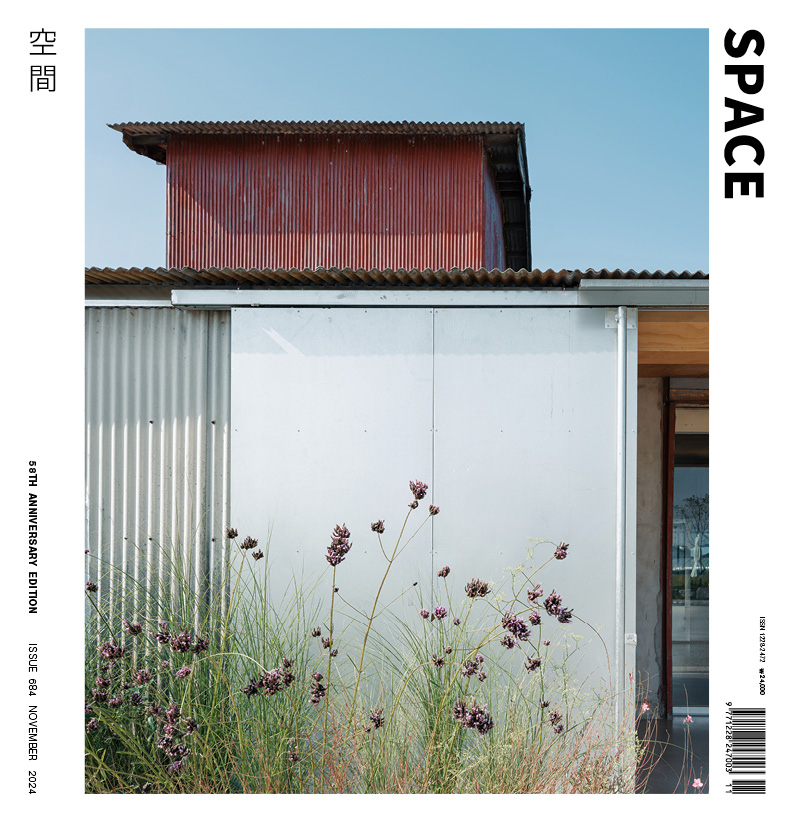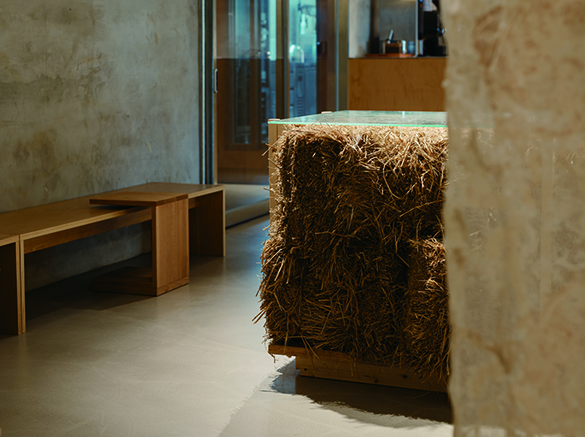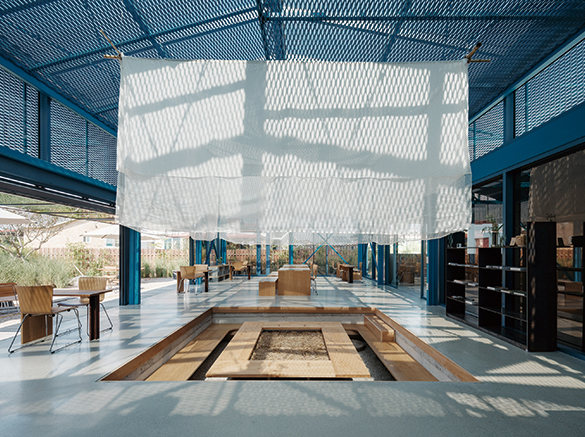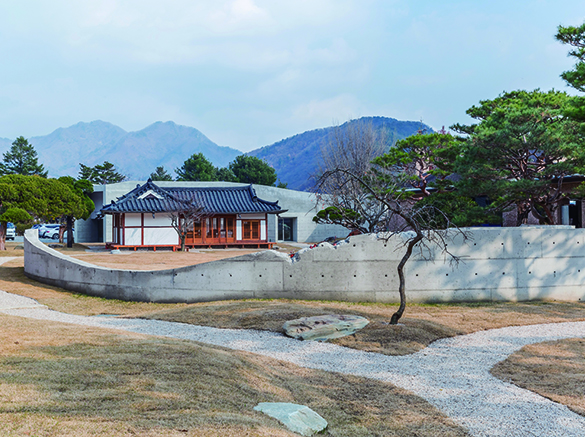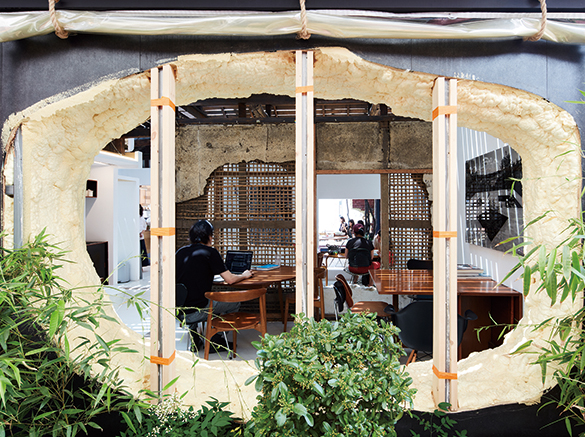SPACE November 2024 (No. 684)
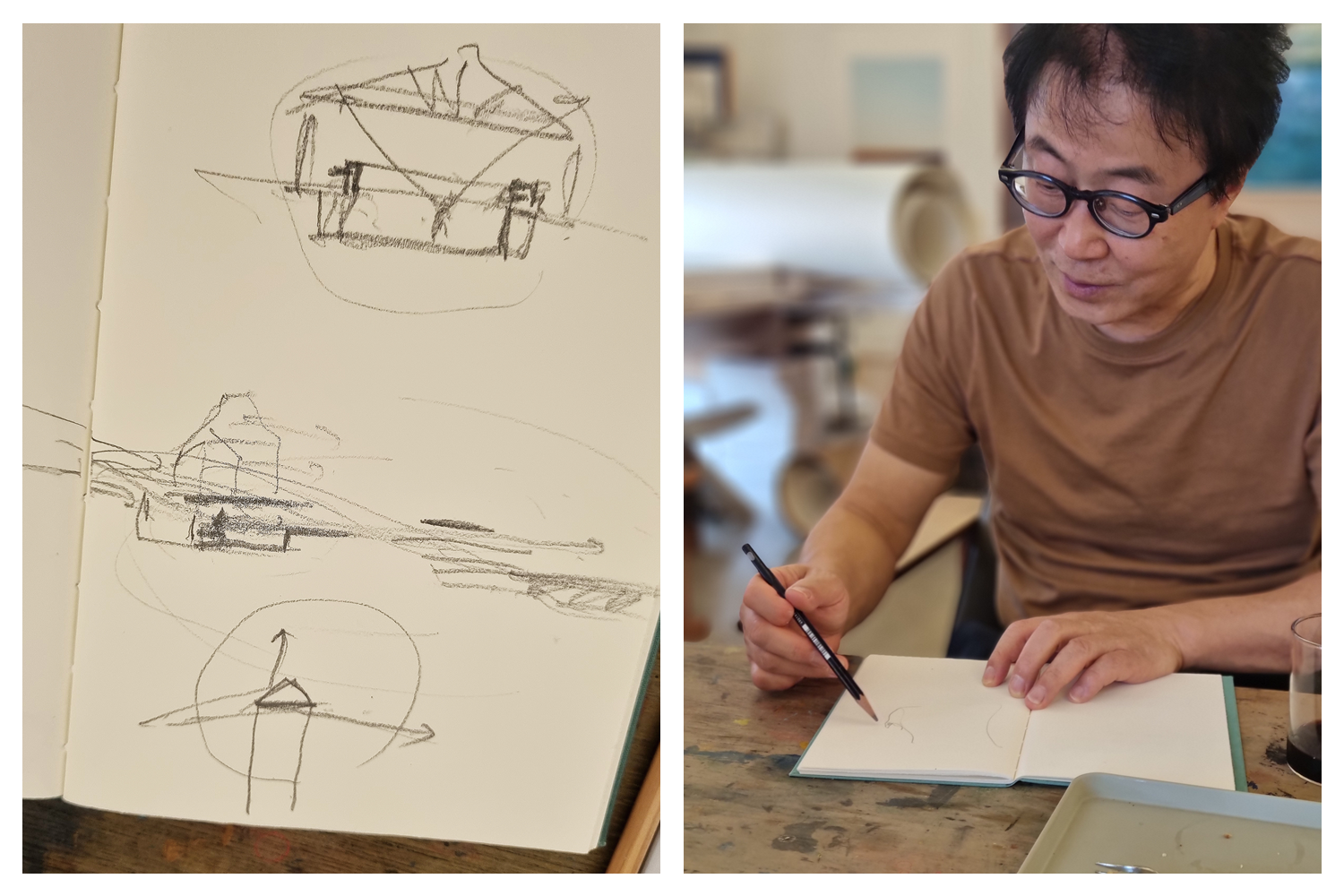
Interview Cho Byoungsoo principal, BCHO Partners × Kim Jeoungeun editor-in-chief
Kim Jeoungeun (Kim): Did you have a good time in the U.S.? I understand you go to Montana every summer?
Cho Byoungsoo (Cho): I went to Montana this year because there was an exhibition at Montana State University to celebrate the retirement of my respected professor. With the help of his wife, I collected his sketches and made a book from them. There was a time in the middle of the year when the School of Architecture at Montana State University was about to close for good, but, thanks to the professor, it remains alive and well. I added the words ‘School of Architecture, MSU’ on the hat he often wore and put its photography in the memory book. His wife really liked it. (laugh)
Kim: A few days ago, I went to the Blue Barn (2024) in Buan with the associate project architect, Kim Miju. When we arrived at the entrance and got out of the car, I almost didn’t recognise the building. It didn’t look that different from the neighbouring warehouses we’d been driving past. Personally, I thought it was a scene representative of this FRAME, which focuses on re-born architecture by BCHO Partners. You have also published a book titled A New Breathing Space: Cho Byoungsoo’s Re-Born Architecture and Urban Regeneration (2020, Yeolhwadang). The term ‘re-born architecture’ is still a bit unfamiliar to me. In general, architects tend to use the words renovation or remodelling instead. So, I am curious to know what you mean by ‘re-born’ and ‘re-born architecture’. It seems that the subtle difference in the meaning of the words you use is ultimately expressed by the direction in which your work travels.
Cho: Is that so? I don’t think I was that aware of it, but when I think of ‘renovation’, it reminds me of ‘innovation’. If renovation is limited to making something new, re-born is therefore more inclusive in its meaning. For instance, it can be applied to the point at which we repair a house. In Europe, the term ‘adapted reuse’ is used a lot. If we call the work of adapting and adjusting to new functions or needs ‘re-born’, then I think there is potential for our architectural vocabulary. But if you think about it, ‘re-born’ is the rebirth of ‘life’. If ‘re-born’ is understood as rebirth without anything new or different from the original, and if there is something else that has been creatively reborn with new functions, then it’s actually a ‘new-born’. It’s not a rebirth, but a ‘life’ that has been newly born. I said re-born architecture to make it easier for people to understand, but if you adhere more closely to the literal meaning, I think it’s actually a ‘new-born architecture’.

Kim: So, based on what you’ve said, am I right in thinking that it’s not something completely different, like an innovation, but an architecture that maintains what is known and adds something new?
Cho: I think architecture is (just) about ‘making’. Many architects try to make their design intentions known by combating architectural convention. For example, the architectural work of Zaha Hadid or Frank Gehry was shaped by tremendous innovation in form, space, movement and so on. But I think it’s better to make something good while reducing innovation. That’s why when I opened my own office in Seongbuk-dong, I told my staff that we should practise an anti- innovative architecture. I said, ‘let’s make architecture that doesn’t explicitly say who its architect is, but that makes people feel comfortable and pleasant when they go there.’ When I was studying in the U.S., I went to Europe as an exchange student. It was then that I realised that these two regions have very different attitudes to architecture. When I was at Harvard University, the professors wanted to know, ‘what’s your idea?’ and ‘what’s new?’. But when I went to the Swiss Federal Institute of Technology in Zurich (ETH), they called the context perspective a situation drawing. In other words, it was important to show the situation of the surroundings and to find a solution that would be good for the city, not to assert my own notions. Mario Campi was the dean at the time, and he continued to talk about the situation plan, using the word ‘precise’ a lot. It’s a term that we don’t use in the U.S. because we work in a very conceptual manner. In Europe, people pursue architecture that is based on situations, where if you are planning a building that is going to be placed between a brick building and a timber building, it has to be different from the existing building, but it has to fit in precisely. I stayed in Germany for a year, from 1995 to 1996, after finishing my studies and working in Korea. It was a memorable time, and I recall that the houses in Germany had beautiful gardens at the back of the houses, even though you couldn’t see them from the outside. The architecture was of very good quality, and there were a lot of great architects like Gottfried Böhm (1920 – 2021). When you walked into any building, there were a lot of impressive spaces, but it was not always clear whose work it was. That made me think that I should try to rid myself of the attitude towards innovation or intervention prized in the U.S. at that time. I think that’s why I didn’t use the word renovation very much.
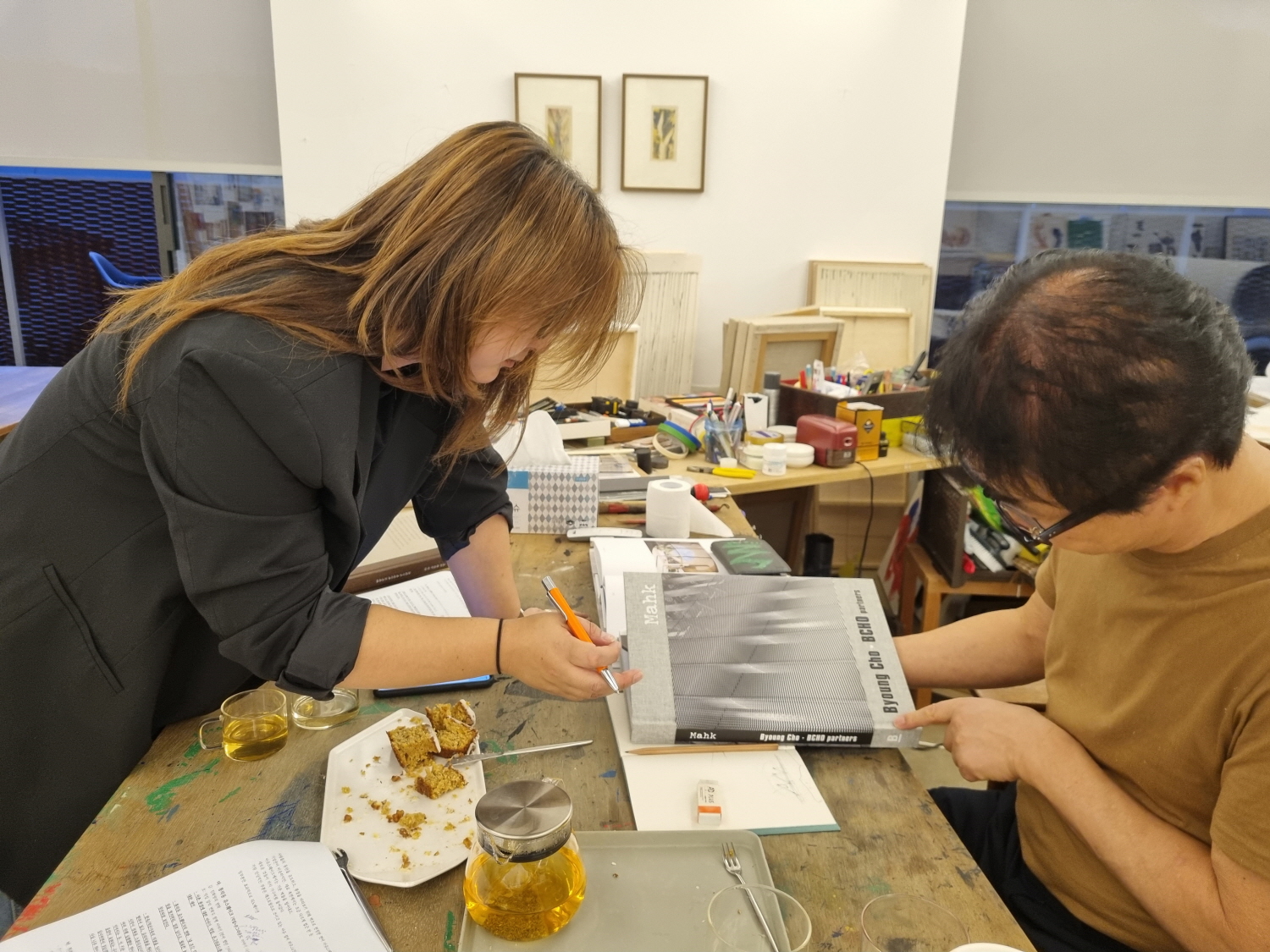
Kim: I think we should consider the ‘architecture towards the earth’ to which you often refer, or the unrefined and spontaneous ‘beauty of mak’, in re-born architecture.
Cho: Actually, it’s not easy to find the ‘beauty of mak’ in architecture, and, in a way, it might be a meaningless act. Because in general, it’s important to draft the drawings precisely and to build the structure faithfully according to the drawings. However, I think that the simple, spontaneous, and straightforward aesthetic found in things like a maksabal bowl or folk painting can be better expressed in re-born architecture. The process of re-born itself is not done according to a pre-arranged plan, but rather there is an improvisational aspect where you change your thought as you dismantle the existing and decide on the spot as the materials reveal themselves.
